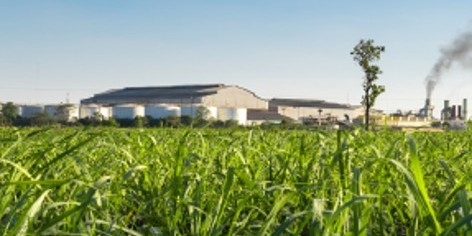It is not unreasonable to think of PFAS ( per- and polyfluoroalkyl substances) in the world of modern material science, product development, and manufacturing as an analogy to the invention of the wheel and its impact on humankind. As the wheel was a fundamental breakthrough that revolutionized movement and building, PFAS has been an enabler of product, process, and machinery solutions since its invention in the 1930s and commercialization in the 1950s. As the wheel is part of everything we do and can never be removed from any society, PFAS chemistry, in thousands of forms, plays a similar role in modern society.
Globally, regulations are rapidly being drafted, including proposed or enacted bans on the use of per- and polyfluoroalkyl substances. The number of state and federal regulations in the U.S. is also growing, all directed at the prevention of continued PFAS contamination. For manufacturers, risks, and liabilities associated with PFAS and the changing regulatory landscape may include substantial financial costs, disputes or litigation, regulatory compliance and enforcement costs, as well as significant reputational risks, business interruption, and capital expenditures.
Notably, in September 2023, the US EPA set a timetable for US manufacturers or importers of manufactured goods to begin reporting on PFAS content in their products. With few exemptions, manufacturers must begin reporting current and historical results regarding the presence of PFAS in their products and supply chains between November 2024 and May 2025. [US TSCA PFAS reporting rule is effective now! Are you ready? – Ramboll Group]
Recognizing the scale of this task and other existing and anticipated regulations, Ramboll, Stress Engineering Services (SES), and Amazon Web Services (AWS) are collaborating to provide comprehensive services to help clients manage their potential PFAS risks and liabilities, PFAS Operational Assessments. SES Force-4 & Ramboll Collaborate to Help Manage Risk With PFAS Operational Assessments – Force Four (force-four.com) Our team provides structured and secure PFAS Operational Assessments that will inform management strategies to assess potential risks and liabilities and, when needed, support the engineering needs associated with material substitution and change.




Risk Assessment, Liability Assessment, and Material Substitution
The PFAS Operational Assessment process, led by Ramboll, focuses on identifying potential risks and liabilities arising from the current or historical presence, use, and/or environmental release of per- and poly-fluoroalkyl substances (PFAS) associated with products and facilities.
The role of SES/Force-4 (a Division of Stress Engineering Services) is to support material substitution related to PFAS abatement. SES/Force-4 has more than 3 decades of experience developing design and materials solutions for products, devices, and process equipment in the medical device, pharmaceutical process, pharma drug delivery, and consumer products industries.
Data Security is Paramount
The Operational Assessment Process (OAP) includes a series of workstreams that are designed to extract data regarding the composition of all chemistry that makes its way into a product and the environment, both intentionally and unintentionally. Because all the data is highly confidential to the manufacturer and the suppliers to the manufacturer, the backbone of the process is the SafeChainTM private blockchain. SafeChainTM is an immutable ledger that leverages AWS’ private blockchain architecture. SafeChainTM offers a secure data management solution that is immutable, traceable, and transparent.
Ultimately, regulatory requirements will require proof of compliance and supply chain partners will be asked to make data available to their customers that is typically confidential. SafeChainTM is designed to be a “firewall” between the manufacturer and their supplier’s data via a managed blockchain service where the data is maintained confidentially by the Ramboll/SES team, on behalf of both parties, in a confidential, immutable ledger.
PFAS Operational Assessment Process
The OAP Process begins with four parallel workstreams.
1. SDS Data Sheet Mining
Most corporations maintain records in the form of SDS documents to memorialize the chemical composition of their products and materials used in their manufacturing operations. At present, because of the diversity of chemistry that falls under the PFAS umbrella, the majority of suppliers may be unaware of whether or not a compound or constituents being used violates PFAS regulation somewhere. For this reason, Ramboll has developed an automated, software-based tool that analyzes data from SDS documentation and identifies suspect chemistry. If identified, further investigation can be initiated to leverage the diverse subject matter experts at Ramboll and SES.
2. Confidential Supply Chain Data Mining
PFAS compounds can make their way into a product along a multitude of pathways from anywhere in a supply chain. These situations require a deep dive into the supply chain and the chemistry of products that may be used by the suppliers themselves. To that end, the Ramboll/SES team will manage an effort to work with your suppliers as a confidential interface to help them uncover all information necessary upstream of their commercial relationship with our client to characterize the constituents of the products they supply. SafeChainTM is critical to the successful completion of this workstream.
3. Internal Manufacturing Operations Review
PFAS contact can occur indirectly, outside of product chemistry or formulation. Common substances used as manufacturing aids, such as “line lube” on filling lines, mold release in injection molding, grease/lubricants, o-rings in process, and reaction vessels, to name a few, can introduce PFAS. Based on the priority established by the Client Leadership Team, a technical team of engineers and chemists will visit client facilities and “walkdown” the manufacturing operations with client manufacturing staff and identify potential sources of PFAS introduction. Working with the client’s manufacturing organization, a process will begin to assess materials and consumables that have been identified and supplied by vendors to the manufacturing organization. The process of investigation is identical to that described in (2) above, with all data and results being secured in the SafeChainTM blockchain architecture.
4. Regulatory State, System Status and Risk Assessment
Risks and liabilities are dynamic in the present PFAS regulatory environment. This workstream begins by assessing a manufacturer’s risks and liabilities based on the local and global markets they serve. Differing requirements are emerging at state and federal levels in the US, as well as differing regulations in global markets.
Results of this workstream are completed at the beginning of a project and updated continuously as the investigations and data from Tasks 1,2,3 and 4 are completed. Post-completion of the initial OAP, monitoring services are offered to enable manufacturers and product owners to maintain a current PFAS risk assessment for individual products, complete product portfolios, and facilities.
Maintaining a Grasp on PFAS Regulatory Exposure
The PFAS Operational Assessment Process is designed to provide secure data acquisition, management, and reporting capabilities, and Risk Prioritization and Strategic Implementation Plan development to enable companies to meet the requirements of the rapidly evolving regulatory framework associated with PFAS.
Author
Clint Haynes, Sr Vice President and founder of SES Force-4 Cincinnati

Reference: B014-M PFAS Operational Assessment Process
Keep in touch with us.
Sign up for our newsletter.




